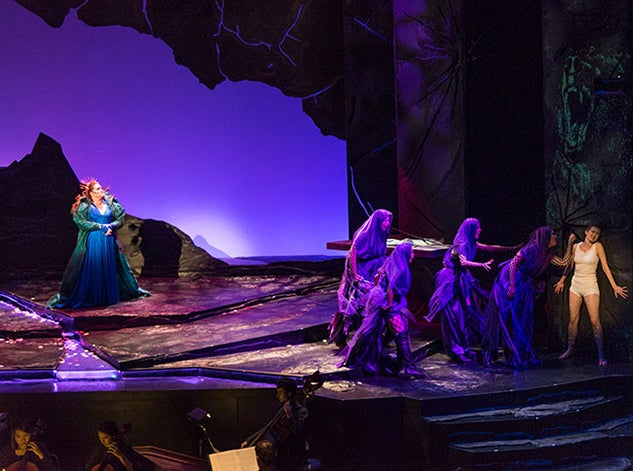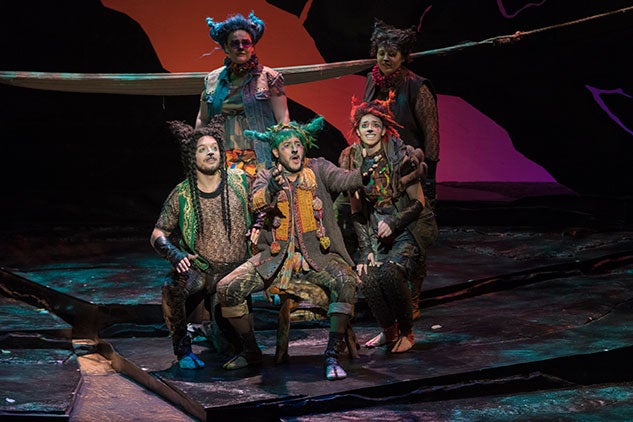
La Calisto's Modern Allure

Last fall, the Shepherd School of Music’s Opera Studies Department and Chamber Orchestra presented “La Calisto,” Francesco Cavalli’s exploration of impossible love and postwar apocalypse. It was the first production under Michael Heaston, the director of Rice’s Opera Studies Program.
“Though this piece is nearly 400 years old and is based on a Greco-Roman myth, ‘La Calisto’ is an opera that speaks fervently to a 21st-century audience,” Heaston said.
At the center of the opera lies the nymph Calisto, a follower of the virgin goddess Diana, who has caught the eye of Jupiter, the most powerful of gods. Initially rebuffed by Calisto, Jupiter turns to his most brilliant disguise yet: dressing up as Diana and seducing Calisto with the promise of chaste kisses. Diana herself, however, is also struggling with her vows of chastity, having recently fallen in love with a young astronomer and poet, Endimione.
The plot thickens with the addition of several demigods and satyrs, whose leader, Pan, is inconsolably in love with Diana — though he’s unaware whether it’s the real Diana or “Jupiter as Diana” he’s courting. Things finally come to a head when Juno, Jupiter’s wife, descends to Earth to figure out what her husband is up to and exacts her revenge on the deceived Calisto.
These sometimes tragic, sometimes hilarious plot twists are set against a bleak, arid world. In the heat of battle, Jupiter showered the world with thunderbolts, destroying all natural life.
“As these characters grapple with the horrendous destruction of war, it is love, both literally and figuratively, that restores beauty to their universe and allows everything around them to bloom once again,” said David Paul, guest stage director.

“With the combined efforts of university staff, guest collaborators and the students involved, this production was born out of a continuously evolving and collaborative environment that inspired me to push my own boundaries as a performer and musician,” said Sydney Baedke ’19, a Shepherd School graduate student who played the role of Calisto.
“Whether by intense character development sessions, studying the style of early Baroque music or methodically working through the physical manifestations of stagecraft, ‘La Calisto’ was a dense project that was incredibly valuable to me as a young singer moving forward into the diverse professional world of opera, and is one that I will reflect on fondly after my time at Rice comes to an end,” Baedke added.
Gary Thor Wedow conducted the orchestra. The opera was sung in Italian with English surtitles. Set design was by Liz Freese, costumes by Sara Jean Tosetti and lighting design by Gary Echelmeyer.
— Amy McCaig
